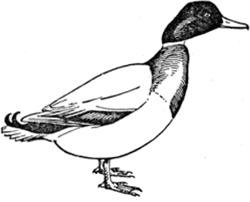Now I Know More (13 page)
Authors: Dan Lewis


THE INGREDIENTS TO THE WEIRDEST REALITY TV SHOWâEVER
Being an entertainerâa successful one at leastâcomes with the price of fame. When people know who you are by name, your value as a singer, dancer, actor, or comedian shoots way up. This is probably why there are so many fledgling (and also-ran) entertainers willing to subject themselves to the often humiliating glare of the spotlight on so-called “reality” television shows. At times, it works: Kelly Clarkson, Susan Boyle, and many others have permeated our collective culture via reality television.
In 1998, the opportunity of reality TV knocked on the door of a Japanese comedian named Nasubi. Nasubi (a stage nameâhis real name is Tomoaki Hamatsu) auditioned for a show in Japan called
Susunu! Denpa ShÅnen
, specifically for a segment called (in translation) “Sweepstakes Boy.” Nasubi got the part and agreed to the terms: That January, he was to be locked in a small room until he won 1 million yen (roughly $10,000) worth of sweepstakes. In the room was a phone, a chair, lots of pens and postcards so he could enter the sweepstakes, and . . . not much else. No food (although he was probably afforded some supplements), no bed, no toilet paper, and no clothes. As part of the challenge, Nasubi had to strip naked, surrendering his clothes upon entering the room, and the door was then locked behind him. But not all was lost: Nasubi was allowed to use anything he won via the sweepstakes.
The idea, the show producers told Nasubi, was that his life in solitary confinement would be recorded and, if it went well, turned into a television show. This was only partially true. Nasubi's travails were broadcast in weekly highlight shows while he was still in confinement, and within a few months, even that was insufficient. Nasubi's popularity was stunning, so producers broadcast a live feed of his life over the Internet, for all the world to see. He was stark naked except for the image of an eggplant, superimposed over his private parts.
The confinement proved difficult for Nasubi. He did not win anything during the first two weeks, when he scored some jellyâhis first real food. A few weeks later, he managed to win a five-pound bag of rice, which he cooked using a tin can, filled with water and placed over his heating unit. He won a television, but because producers did not want him to know that he was on TV, the room did not have a cable or antenna hookup. At one point, he ran out of rice and began to eat dog food, but don't worry: According to the now-defunct website Quirky Japan, a visit to the doctor in May 1998 assessed Nasubi as in good health.
Over time, the winnings piled up. Neatorama reported some highlights:
Two vacuum cleaners . . . four bags of rice, his watermelon, his automobile tires, his belt, and his ladies underwear (the only articles of clothing he won during months of captivity), his four tickets to a Spice Girls movie (which he could not leave his apartment to see), his bike (which he could not ride outside), and countless other items, including chocolates, stuffed animals, headphones, videos, golf balls, a tent, a case of potato chips, a barbecue, and a shipment of duck meat.
In December 1998, Nasubi won another bag of rice, which put him over the 1 million yen threshold. The producers rewarded him with a trip to South Korea, where they immediately stuck him in a new apartment and had him go through the whole thing again, naked, until he won enough in prizes to earn a plane ticket home. He did so three months later.
Upon his return home, the show's producers had one more enclosed room for Nasubi to enter, and he dutifully shed his clothes again and waited for further instruction. Unfortunately, this time, the walls fell to their sides, revealing a naked Nasubi (with no eggplant to shield him) to a crowd of fans who, unbeknownst to him, had been following his every move for months. (He managed to find a pillow to replace the virtual eggplant.) Furthermore, the diary he had been keeping while confined was turned into a very successful book; a video of the ramen noodles he ate after gaining his freedom turned into a commercial; and of course, he was known throughout the country. Nasubi had become a sensation.
If you think insane reality TV shows are incredibly popular in Japan, one particular video game makes their ratings seem anemic. That game?
Space Invaders
. Released in 1978, the game was so popular that, according to the book
The Ultimate History of Video Games
, it created a 100-yen coin shortage throughout the country, requiring the Japanese mint to triple production of the coins.

THE HOTEL THAT GIVES A QUACK
There's a certain air of elitism that comes with things like red carpets, penthouse suites, processionals, and ornate fountains. We can imagine a movie scene where the leading lady emerges from the palatial top floor of the hotel with all eyes on her. She makes her way down an opulent staircase, draped in deep red, and meets her beau in front of a display of water-spouting cherubs carved from Italian marble. That's typically fantasy, thoughâmade in Hollywood and shipped to the silver screens across the world. However, at the Peabody Hotel in Memphis, Tennessee, such an event is an everyday occurrence.
With one minor change, of course. The Hollywood starlet is anything but. She, and the others who parade down the red carpet, are ducks.
Yes, ducks, as in the waterfowl that quack. Oh, and they're not meeting their dinner dates. The ducks are going for a swim.
The Peabody Hotel Duck March is a daily tradition dating back decades. In the 1930s, the hotel's general manager, Frank Schutt, and a friend went duck hunting in Arkansas but came up empty. Then, as now, duck hunters used decoys to attract potential targets. While modern duck hunters use wooden (i.e., fake) ducks as decoys, back when Schutt and his friend went hunting, it was still acceptable to use live ones. So when they returned to Memphis without having killed any ducks, they weren't entirely empty-handedâthey still had the live decoy ducks with them. According to the Peabody Hotel's website, they also were a little too friendly with some Jack Daniel's whiskey, which explains why they thought it'd be funny to let their live ducks go for a swim in the hotel's very expensive fountain made from a solid piece of Italian marble.
Thankfully, the guests appreciated the humor and the cuter-than-typical creatures splashing away. The hotel's owners agreed and decided that ducks should be a permanent addition to the fountain. Of course, if you're going to be silly, you as might as well do it in a big, ostentatious way. The hotel constructed a home for the ducksâcalled the “Royal Duck Palace”âas part of the hotel's penthouse. And every day at 11
A.M
., the hotel rolls out the red carpet for the ducksâliterally. The ducks are led from their palace down the temporarily red-clad stairs and into the water as guests watch and applaud. Often, a celebrity is invited to be the marshal of the duck parade, leading the special guests as they make their way to the water.
While you'll find ducks in the fountain at the Peabody, you won't find them on the menu at any of the hotel's restaurants. The Peabody stopped serving the cousins of their guests in 1981 and claim to be the only place in the United States (if not the world) that features a French restaurant not serving duck.
Wooden decoys replaced live ducks in the early part of the twentieth century, and by the 1970s, these painted carvings became popular collectables. There's a surprisingly lucrative market for high-end ones. In early 2007, a wooden duck sold at auction for over $850,000, and later that year, two more in private sales went for more than $1 million apiece.

DISNEY'S INVASION OF CHRISTMAS (IN SWEDEN)
On December 19, 1958, had you tuned to ABC in the United States, you would have watched a Disney show titled
From All of Us to All of You
. The forty-five-minute special hosted by Mickey Mouse, Jiminy Cricket, and Tinkerbell featured clips from old Disney footage spliced with new content intended to act as a virtual Christmas card of sorts. The special aired in the United States in various forms in subsequent years through the early 1980s and has rarely been on TV since then. It was once released on VHS and laserdisc (!) but never on DVD. Few Americans today can recall ever seeing a version of the special.
But if you're Swedish? Chances are you've seen it a few times.
In 1959âa year after
From All of Us to All of You
debuted in the StatesâDisney sent a series of dubbed, localized versions to Scandinavia. Sweden's version is called
Kalle Anka och hans vänner önskar God Jul
(“Donald Duck and His Friends Wish You a Merry Christmas”) and it debuted on December 24 of that year. The hour-long adaptation has been shown every year since. At 3
P.M
. on Christmas Eve, Swedes can tune in to SVTâSveriges Televisionâand enjoy a strangely dated collection of Disney clips from the 1920s to 1950s.
And every year, millions do exactly that. In 2012, for example, 3.8 million Swedes watched Donald Duckâwho is more popular in Sweden than Mickeyâquack his way through the iconic Christmas special. In a country of only about 9.5 million people total, that's a huge number of viewers. It's enough to make it the second-most watched show in the nation for the entire year, an honor the special has held for four straight years and for the seventh time in ten years. (The other three years? Two third-place finishes and one fourth.)
Watching the show is not simply traditionâit's sacrosanct. In the 1970s, the television station at the time, TV1, considered canceling the special, but upset viewers came out in droves to demand that Donald Duck grace their screens that Christmas. Even tiny changes are not tolerated. As
Slate
reported, in 1982 the show's producers decided to swap out a short titled “Ferdinand the Bull” (which received an Academy Award in 1938) for “The Ugly Duckling.” Viewers were enraged, and the next year, the bull was back in its place in Donald's wintertime special. And don't even think about watching it on your DVRâSwedes tune in, live, as if Santa himself were coming down the chimney with Donald.
The reasons for this cultural peculiarity are unclearâsome attribute it to timing, as TV first emerged in the Swedish mainstream at the end of the 1950s and early 1960sâbut in any event, Christmas duck has a very different meaning in Sweden than it does everywhere else.
In an effort to raise money for war bonds during World War II, Walt Disney produced an animated short called
Der Fuehrer's Face
. The short features Donald Duck as a Nazi factory worker whose job it is to screw caps onto artillery shells. Donald's experience as a Nazi worker becomes progressively worse and worse (and more and more ridiculous) until the endâlet's not spoil it, as you can usually find the clip on YouTube. Suffice it to say that Donald was always loyal to the Allied cause. The short won an Academy Award for Animated Short Film. It is the only Donald Duck animation to win an Oscar.